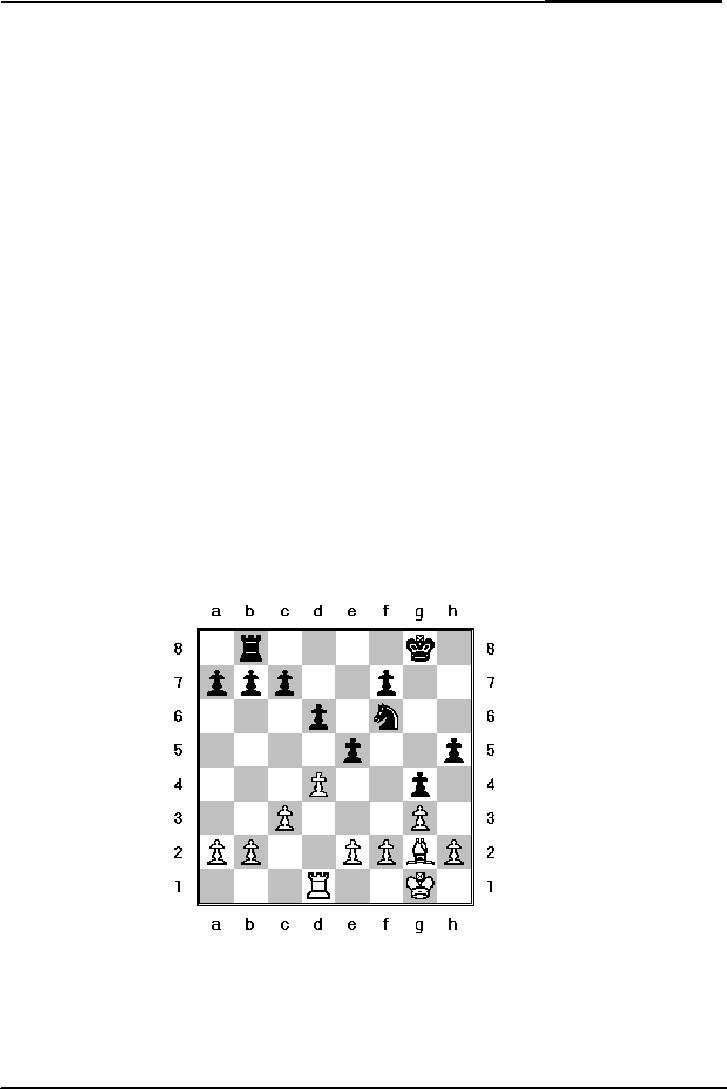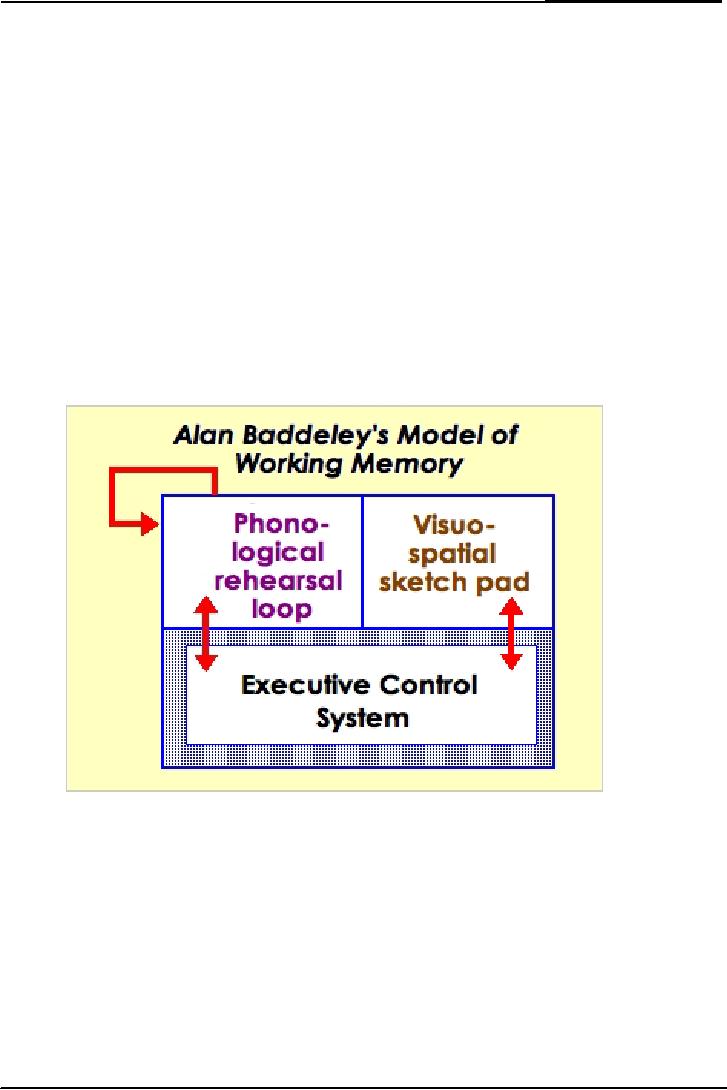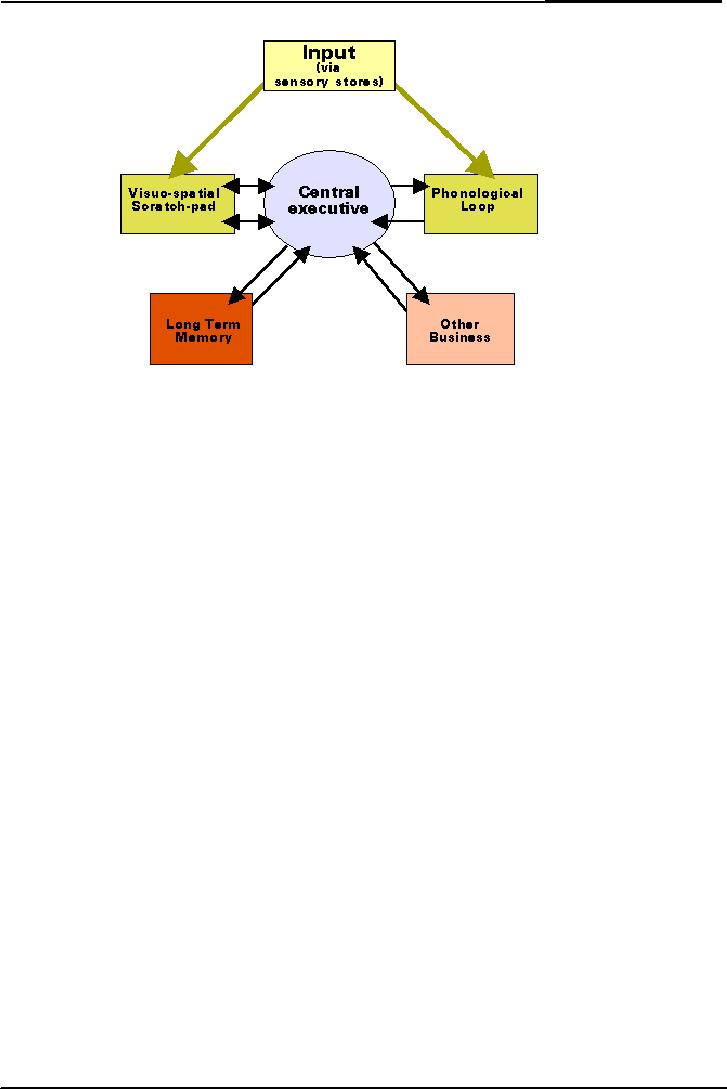 |
Memory:Chunking, Individual differences in chunking |
| << Memory:Activation in a network, Magic number 7, Chunking |
| MEMORY:THE NATURE OF FORGETTING, Release from PI, Central Executive >> |

Cognitive
Psychology PSY 504
VU
Lesson
26
Memory
Chunking
Chunking
is a way to increase capacity.
Capacity of STM varies with
meaningfulness of the
material.
A chunk is a memory unit. STM
capacity is not limited by a
physically defined unit but
by
a
meaningfulness unit. Through
chunking we can learn 21
digits at a time. Words
limit is seven.
But
the capacity of sentence is
much lower than letters
and words.
In
nursery classes chunking is
used to learn the lesson to
children. Like, 1, 2 buckle my
show, 3,
4
shut the door. This
(shut the door) became
one unit or chunk. And 5, 6
pick up sticks.
Individual
differences in chunking
Example
of Chess Players:
Chess
is a queen of games. Because it
needs high level of
thinking.
De
Groot wrote a book on chess
in 1965. The name of book
was Thought
and Choice in
Chess.
He
combined his all researches
on chess in this
book.
Chess
Masters differ because of
different perception and
Memory rather than thinking.
Grand
master
automatically plays games.
But a new or inexperienced
person takes long time to
play.
We
all have same working
memory limits. But the
orientation is different. There
are 16 black
pieces
and 16 white pieces on chess
board. At a time we are able
to use only 7 pieces. If
we
make
a chunk of meaningful pieces.
Then we are able to use
more. For example we make
a
chunk
of 3 pieces. Then we can use
21 pieces (7 chunks) then we
easily remember our
16
pieces.
In
experiment, People were
asked to look at picture of
chess board. And subjects
were told that
20
moves had done into
the game. They were
asked to view the board-
removed pieces for 5
seconds.
Subjects put pieces back.
Experimenter removed incorrect
pieces-try again.
Subjects
were
given 12 trials. The picture
of chess board is given
below.
Results
& Implications
Results
of experiment were that
grandmasters performed 90%
accurately on first trial.
And
novices
played 40% accurately on
first trial. The difference
decreases over 12 trials.
No
differences
between them on guessing.
The grandmasters performed
best because they
chunk
pieces
together into patterns. So
they can remember it better.
And may be the other reason
of
77

Cognitive
Psychology PSY 504
VU
their
performance is that they
were told that the 20
moves had done. And what is
the pattern?
Grandmasters
are expert they can
guess what the board
situation is after 20
moves.
Memory
Aided Pattern Perceiver
(MAPP)
MAPP
is a computer chess program.
Simon & Gilmartin (1973)
extended the De Groot's
work.
And
they made a computer chess
program for computers. They
made 572 chunks with
different
pattern
from 2 to 7 pieces each.
Program was more effective
than a class-A player but
not as
good
as a master player. There is a
high correlation between
pieces remembered by MAPP &
Master
Players. Those people make
chunks and store different
patterns they can perform
best.
Chunking
for chess is over time
chunking. It is changed within
time or moves.
Individual
differences
Master
Players have between 10,000
and 100,000 chunks stored in
Long Term Memory.
They
have large pattern of chunks
that's why they perform
best in doing chess. These
chunks are
activated
into Short Term
Memory.
Alan
Baddeley's Model of Working
Memory
Alan
Baddeley's presented a model of
working memory. The simple
representation of his
model
is
given below.
He
said about sound rehearsal
not meaning. He talked about
a phonological rehearsal
loop
because
of sound rehearsal. For
example we revise telephone
numbers not because of
meaning
but
because we want to remember
that. But on chess board we
can not verbally rehearse
visual
image.
In our short term memory we
have a sketch pad. On that
sketch pad we watch
important
things.
He
also said about central
executive that control all
the memory system. This
central executive
decides
about attention, and memory.
This central executive makes
decision about the
information
that it match with long
term information or not.
This is the broader concept
of
Baddley's
model. According to this
sloop process every decision
is made by this
central
executive.
78

Cognitive
Psychology PSY 504
VU
79
Table of Contents:
- INTRODUCTION:Historical Background
- THE INFORMATION PROCESSING APPROACH
- COGNITIVE NEUROPSYCHOLOGY:Brains of Dead People, The Neuron
- COGNITIVE NEUROPSYCHOLOGY (CONTINUED):The Eye, The visual pathway
- COGNITIVE PSYCHOLOGY (CONTINUED):Hubel & Wiesel, Sensory Memory
- VISUAL SENSORY MEMORY EXPERIMENTS (CONTINUED):Psychological Time
- ATTENTION:Single-mindedness, In Shadowing Paradigm, Attention and meaning
- ATTENTION (continued):Implications, Treisman’s Model, Norman’s Model
- ATTENTION (continued):Capacity Models, Arousal, Multimode Theory
- ATTENTION:Subsidiary Task, Capacity Theory, Reaction Time & Accuracy, Implications
- RECAP OF LAST LESSONS:AUTOMATICITY, Automatic Processing
- AUTOMATICITY (continued):Experiment, Implications, Task interference
- AUTOMATICITY (continued):Predicting flight performance, Thought suppression
- PATTERN RECOGNITION:Template Matching Models, Human flexibility
- PATTERN RECOGNITION:Implications, Phonemes, Voicing, Place of articulation
- PATTERN RECOGNITION (continued):Adaptation paradigm
- PATTERN RECOGNITION (continued):Gestalt Theory of Perception
- PATTERN RECOGNITION (continued):Queen Elizabeth’s vase, Palmer (1977)
- OBJECT PERCEPTION (continued):Segmentation, Recognition of object
- ATTENTION & PATTERN RECOGNITION:Word Superiority Effect
- PATTERN RECOGNITION (CONTINUED):Neural Networks, Patterns of connections
- PATTERN RECOGNITION (CONTINUED):Effects of Sentence Context
- MEMORY:Short Term Working Memory, Atkinson & Shiffrin Model
- MEMORY:Rate of forgetting, Size of memory set
- Memory:Activation in a network, Magic number 7, Chunking
- Memory:Chunking, Individual differences in chunking
- MEMORY:THE NATURE OF FORGETTING, Release from PI, Central Executive
- Memory:Atkinson & Shiffrin Model, Long Term Memory, Different kinds of LTM
- Memory:Spread of Activation, Associative Priming, Implications, More Priming
- Memory:Interference, The Critical Assumption, Limited capacity
- Memory:Interference, Historical Memories, Recall versus Recognition
- Memory:Are forgotten memories lost forever?
- Memory:Recognition of lost memories, Representation of knowledge
- Memory:Benefits of Categorization, Levels of Categories
- Memory:Prototype, Rosch and Colleagues, Experiments of Stephen Read
- Memory:Schema Theory, A European Solution, Generalization hierarchies
- Memory:Superset Schemas, Part hierarchy, Slots Have More Schemas
- MEMORY:Representation of knowledge (continued), Memory for stories
- Memory:Representation of knowledge, PQ4R Method, Elaboration
- Memory:Study Methods, Analyze Story Structure, Use Multiple Modalities
- Memory:Mental Imagery, More evidence, Kosslyn yet again, Image Comparison
- Mental Imagery:Eidetic Imagery, Eidetic Psychotherapy, Hot and cold imagery
- Language and thought:Productivity & Regularity, Linguistic Intuition
- Cognitive development:Assimilation, Accommodation, Stage Theory
- Cognitive Development:Gender Identity, Learning Mathematics, Sensory Memory